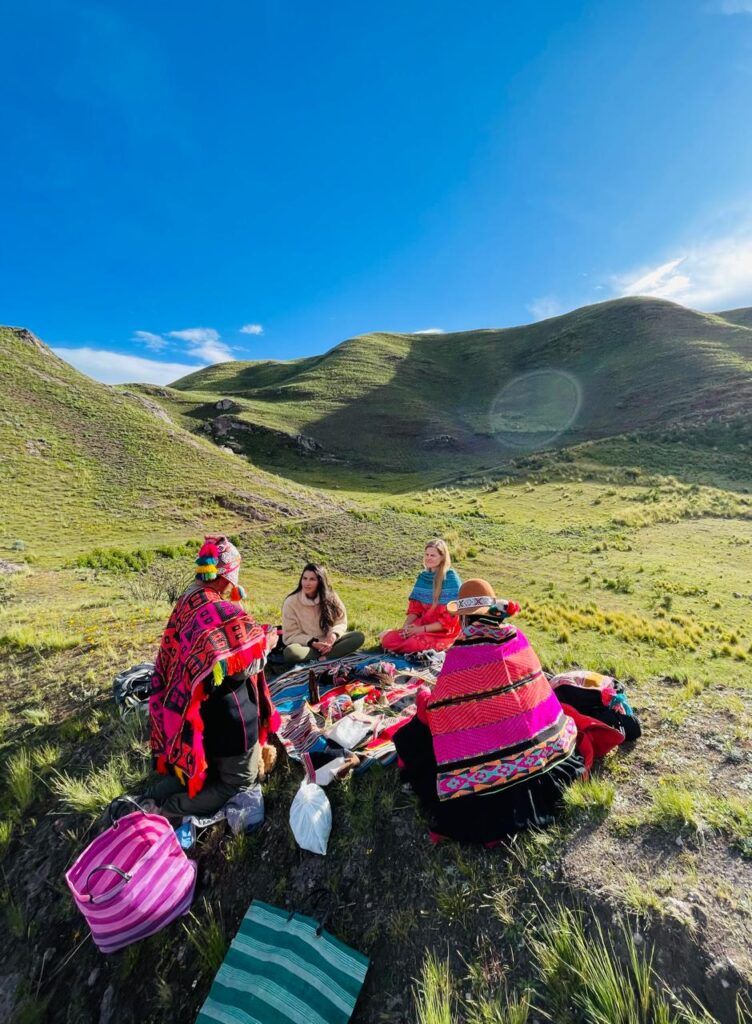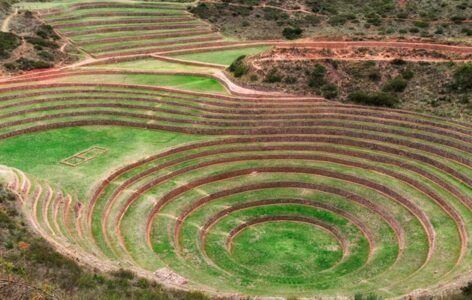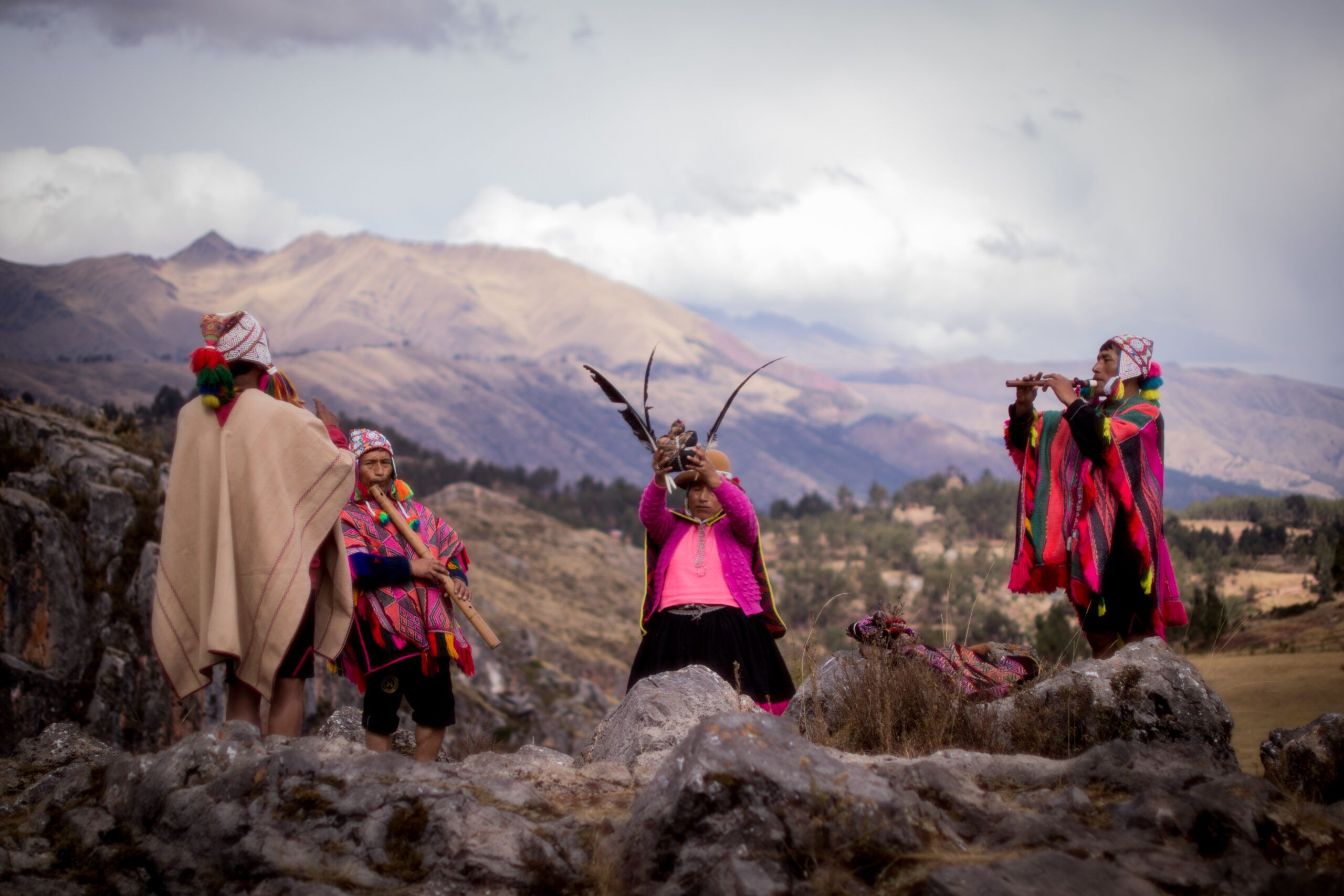The Andean Cosmovision offers a powerful and holistic worldview that honors balance, reciprocity, and the Sacred Feminine.
For women seeking personal development, healing, or spiritual empowerment, ancient Andean practices provide grounded, nature-based tools to reconnect with their inner power and with the cycles of life.

Rooted in indigenous wisdom from the highlands of Peru, Bolivia, and Ecuador, these traditions invite women to walk a path of Munay (unconditional love), Yachay (wisdom), and Llankay (sacred work)—the foundational Andean principles.
1. Honoring Pachamama: Reclaiming Feminine Connection

In Andean spirituality, Pachamama (Mother Earth) is not a symbol—she is a living presence, a conscious being that gives and receives life.
For women, connecting with Pachamama is a way to:
- Relearn how to receive and how to nourish without guilt.
- Ground themselves in body awareness.
- Heal wounds of disconnection or self-neglect.
Practices:
- Offer daily gratitude to the Earth before meals or walks
- Sit or lie directly on the earth during meditation
- Participate in a Despacho ceremony (offering ritual) for healing and abundance
2. Embracing the Lunar Cycle with Mama Killa
The moon, or Mama Killa, governs the feminine rhythm. In the Andean worldview, each phase of the moon offers a different energetic quality: rest, planting, nurturing, releasing.
Reconnecting with your cycle (whether menstrual or energetic) restores your innate intuition and helps balance your internal world.

Practices:
- Keep a moon journal tracking emotions, dreams, energy levels
- Schedule rest, creativity, or action according to moon phases
- Perform cleansing rituals during the waning moon, and intention-setting during the new moon
3. Feminine Path of Munay, Yachay, and Llankay
These three Andean principles offer a roadmap for holistic personal development:

Munay (Love and Will): Cultivate compassion for yourself and others. Engage in heart-centered meditation or mantra.
Yachay (Wisdom and Clarity): Develop intuitive and intellectual insight. Journal, study sacred texts, or seek spiritual guidance.
Llankay (Purposeful Action): Apply your energy to meaningful, balanced action. Focus on service, community work, or creating art.
Empowerment arises when these three forces are in harmony—when your heart, mind, and hands are working together.
4. Healing through Ayni: Reciprocity with Life
Ayni is the sacred law of reciprocity in the Andes. It teaches that true growth happens not through domination or control, but through balanced exchange—with nature, community, and Spirit.
For women, this means:
- Setting healthy boundaries while staying generous
- Asking for help without shame
- Understanding that receiving is as sacred as giving

Practices:
- Write down what you are receiving from life—and what you’re offering back
- Perform small daily acts of Ayni: share food, help a friend, give back to nature
5. Working with the Apus: Strength through Sacred Mountains

The Apus, or mountain spirits, are guardians and teachers. For women, invoking the Apus can help build strength, protection, and inner stability—especially when navigating fear, doubt, or major life transitions.
Practices:
- Meditate or pray facing a mountain (or visualize one)
- Ask a specific Apu (e.g., Apu Ausangate, Apu Salkantay) for guidance
- Carry a small stone (Khuyay Rumi) from a sacred place as a talisman
6. Ceremonial Healing: Coca, Fire, and the Elements
Traditional Andean healing includes ceremonial use of coca leaves, sacred fire rituals, and cleansing with flowers, eggs, and herbs. These can be adapted in respectful ways for spiritual hygiene and emotional release.
Try this simple ritual:
- Offer them to the Earth or fire with a prayer of release.
- Sit quietly with a bowl of water, coca or bay leaves, and a candle.
- Blow your worries or intentions into the leaves.

The Andean worldview reminds us that the feminine is not weak or passive—it is sacred, cyclic, nourishing, and deeply wise. By reconnecting with these ancient practices, women can reawaken their power in a way that is grounded, intuitive, and whole.
These practices don’t require abandoning modern life—they invite a return to sacred presence in everything we do.
References
- Apaza, M. (2013). Cosmovisión Andina y Espiritualidad Femenina. Editorial Pachamama.
- Wilcox, J. (2004). Keepers of the Sacred Chants: The Poetics of Ritual Power in an Andean Village. University of Arizona Press.
- Saavedra, L. (2012). Munay: El Poder del Amor en la Sabiduría Andina. Lima: Wasi Editorial.
- Gose, P. (1994). Deathly Waters and Hungry Mountains: Agrarian Ritual and Class Formation in an Andean Town. University of Toronto Press.
- de la Torre, R. (2020). Andean Spirituality and Women’s Transformational Practices. Journal of Indigenous Studies and Healing Traditions.



